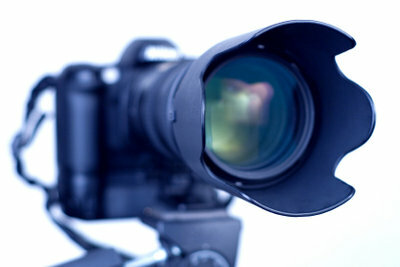Set the focal length correctly on a digital camera
If you don't want your digital camera to automatically adjust the focal length, you can often Take photos with which you are more satisfied because they give you and your personal vision more correspond. Because the camera sees objectively, they see subjectively. These notes are intended for amateur photographers who are not very familiar with the subject.

Make sure you understand what a focal length is
- The focal length is the distance from the lens, the eye of the digital camera, to the focal point, also known as the focus. It is given in millimeters. The focal length determines the image section.
- If you shoot the same subject with different focal lengths and do not change your point of view, then the perspective does not change, only the reproduction scale, i.e. the section is enlarged or scaled down. So instead of using a different lens, you could enlarge a section.
- You can enlarge a section with the digital camera (digital zoom) by using a higher resolution. For example, if you have a camera with 3x zoom and want to achieve this zoom by enlarging a section with the same image scale, you need four times as many pixels.
- The focal length can range from 17 mm to 2000 mm (telephoto lens). A lock that you can see at a good distance at 17 mm can be seen in detail with a telephoto lens (2000 mm). For example, you can recognize a chimney - roughly illustrated.
- A focal length of 50 mm is called a normal lens because it roughly corresponds to the viewing angle of your eye, namely 46 degrees.
- If the focal length is less than 50 mm, one speaks of a wide-angle lens. So-called fisheyeLenses have a viewing angle of 180 degrees, which usually creates a circular image.
- For focal lengths that exceed 50 mm, one speaks of telephoto, super-telephoto or even ultra-telephoto lenses.
- In contrast to the 35mm film in an analog camera, the so-called. CCD recording chip in a digital camera is smaller. As a result, the values for the focal length are much smaller. Now there are also different CCDs, so that the manufacturers of Digital cameras For the sake of ease of use, specify the focal length converted to the 35mm format. So you don't have to do the arithmetic.
Use a lens with a focal length of 18-55 mm correctly - this is how it works
A lens with a focal length range of 18-55 mm is used on most cameras ...
Taking photos with a digital camera - you should know that
- Both wide-angle and telephoto lenses no longer correspond to what the human eye can perceive. This can make a photo look messed up, but you can just as well only take a particularly successful photo if a photo gains aesthetic quality thanks to the alienation effect.
- Note that as the focal length of the digital camera increases, the light intensity decreases, so it does If necessary, use the flash to compensate for this or work with a tripod recommends.
- The longer the focal length, the more difficult it is to get good lenses in terms of speed, resolution and distortion. The focal length of digital cameras is limited (about 38 to 190 mm). Thanks to the thread, however, wide-angle or Unscrew the teleconverter.
- Cheaper digital cameras usually only have a few zoom levels. So you cannot continuously zoom in on a subject. If you want to select the exact section of the picture yourself that is necessary for a successful photo, then you should choose a digital camera that allows you to mechanically adjust the focal length, namely stepless. This is guaranteed with SLR lenses.
How helpful do you find this article?
